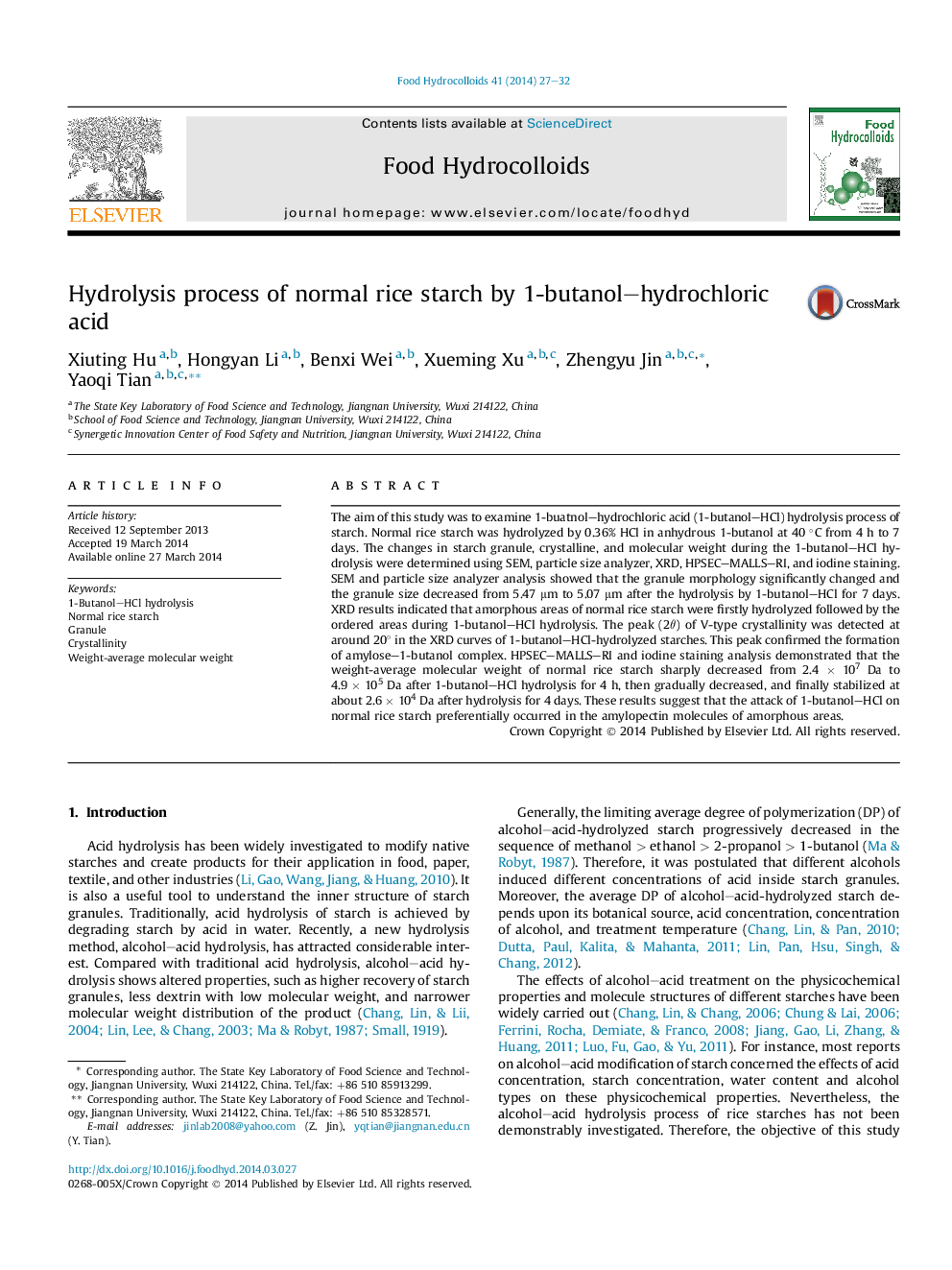| Article ID | Journal | Published Year | Pages | File Type |
|---|---|---|---|---|
| 605036 | Food Hydrocolloids | 2014 | 6 Pages |
•Normal rice starch was hydrolyzed with 0.36% HCl in 1-butanol at 40 °C for 7 d.•The changes in starch granule, crystalline, molecule weight were investigated.•The amylose–1-butanol complex was confirmed by XRD.•The Mw of starch dramatically decreased after 1-butanol–HCl hydrolysis for 4 h.•1-Butanol–HCl preferentially attacked amylopectin of amorphous areas.
The aim of this study was to examine 1-buatnol–hydrochloric acid (1-butanol–HCl) hydrolysis process of starch. Normal rice starch was hydrolyzed by 0.36% HCl in anhydrous 1-butanol at 40 °C from 4 h to 7 days. The changes in starch granule, crystalline, and molecular weight during the 1-butanol–HCl hydrolysis were determined using SEM, particle size analyzer, XRD, HPSEC–MALLS–RI, and iodine staining. SEM and particle size analyzer analysis showed that the granule morphology significantly changed and the granule size decreased from 5.47 μm to 5.07 μm after the hydrolysis by 1-butanol–HCl for 7 days. XRD results indicated that amorphous areas of normal rice starch were firstly hydrolyzed followed by the ordered areas during 1-butanol–HCl hydrolysis. The peak (2θ) of V-type crystallinity was detected at around 20° in the XRD curves of 1-butanol–HCl-hydrolyzed starches. This peak confirmed the formation of amylose–1-butanol complex. HPSEC–MALLS–RI and iodine staining analysis demonstrated that the weight-average molecular weight of normal rice starch sharply decreased from 2.4 × 107 Da to 4.9 × 105 Da after 1-butanol–HCl hydrolysis for 4 h, then gradually decreased, and finally stabilized at about 2.6 × 104 Da after hydrolysis for 4 days. These results suggest that the attack of 1-butanol–HCl on normal rice starch preferentially occurred in the amylopectin molecules of amorphous areas.
Graphical abstractThe XRD pattern and relative crystallinity of normal rice starch showed no significant difference but a V-type peak at 2θ = 20° was detected, after hydrolysis by 1-butanol–HCl for 4 h. This indicated the amylose–1-butanol complex formed during the 1-butanol–HCl hydrolysis.Figure optionsDownload full-size imageDownload as PowerPoint slide
